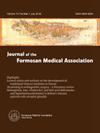Automated liver volumetry and hepatic steatosis quantification with magnetic resonance imaging proton density fat fraction
IF 2.6
3区 医学
Q1 MEDICINE, GENERAL & INTERNAL
引用次数: 0
Abstract
Background
Preoperative imaging evaluation of liver volume and hepatic steatosis for the donor affects transplantation outcomes. However, computed tomography (CT) for liver volumetry and magnetic resonance spectroscopy (MRS) for hepatic steatosis are time consuming. Therefore, we investigated the correlation of automated 3D-multi-echo-Dixon sequence magnetic resonance imaging (ME-Dixon MRI) and its derived proton density fat fraction (MRI-PDFF) with CT liver volumetry and MRS hepatic steatosis measurements in living liver donors.
Methods
This retrospective cross-sectional study was conducted from December 2017 to November 2022. We enrolled donors who received a dynamic CT scan and an MRI exam within 2 days. First, the CT volumetry was processed semiautomatically using commercial software, and ME-Dixon MRI volumetry was automatically measured using an embedded sequence. Next, the signal intensity of MRI-PDFF volumetric data was correlated with MRS as the gold standard.
Results
We included the 165 living donors. The total liver volume of ME-Dixon MRI was significantly correlated with CT (r = 0.913, p < 0.001). The fat percentage measured using MRI-PDFF revealed a strong correlation between automatic segmental volume and MRS (r = 0.705, p < 0.001). Furthermore, the hepatic steatosis group (MRS ≥5%) had a strong correlation than the non–hepatic steatosis group (MRS <5%) in both volumetric (r = 0.906 vs. r = 0.887) and fat fraction analysis (r = 0.779 vs. r = 0.338).
Conclusion
Automated ME-Dixon MRI liver volumetry and MRI-PDFF were strongly correlated with CT liver volumetry and MRS hepatic steatosis measurements, especially in donors with hepatic steatosis.
利用磁共振成像质子密度脂肪分数自动定量肝脏体积和肝脂肪变性。
背景:供体肝脏体积和肝脏脂肪变性的术前成像评估会影响移植结果。然而,用于肝脏体积测量的计算机断层扫描(CT)和用于肝脏脂肪变性测量的磁共振波谱成像(MRS)都非常耗时。因此,我们研究了自动三维多回波-狄克逊序列磁共振成像(ME-Dixon MRI)及其衍生的质子密度脂肪分数(MRI-PDFF)与活体肝脏捐献者的 CT 肝脏体积测量和 MRS 肝脂肪变性测量的相关性:这项回顾性横断面研究于 2017 年 12 月至 2022 年 11 月进行。我们招募了在 2 天内接受动态 CT 扫描和 MRI 检查的供体。首先,使用商业软件对 CT 容量进行半自动处理,并使用嵌入序列自动测量 ME-Dixon MRI 容量。然后,将 MRI-PDFF 容量数据的信号强度与 MRS 作为金标准进行关联:我们纳入了 165 位活体供体。ME-Dixon MRI 的肝脏总体积与 CT 显著相关(r = 0.913,p 结论:MRI-PDFF 的肝脏总体积与 CT 的肝脏总体积显著相关:自动 ME-Dixon MRI 肝脏容积测量和 MRI-PDFF 与 CT 肝脏容积测量和 MRS 肝脂肪变性测量结果密切相关,尤其是在有肝脂肪变性的供体中。
本文章由计算机程序翻译,如有差异,请以英文原文为准。
求助全文
约1分钟内获得全文
求助全文
来源期刊
CiteScore
6.50
自引率
6.20%
发文量
381
审稿时长
57 days
期刊介绍:
Journal of the Formosan Medical Association (JFMA), published continuously since 1902, is an open access international general medical journal of the Formosan Medical Association based in Taipei, Taiwan. It is indexed in Current Contents/ Clinical Medicine, Medline, ciSearch, CAB Abstracts, Embase, SIIC Data Bases, Research Alert, BIOSIS, Biological Abstracts, Scopus and ScienceDirect.
As a general medical journal, research related to clinical practice and research in all fields of medicine and related disciplines are considered for publication. Article types considered include perspectives, reviews, original papers, case reports, brief communications, correspondence and letters to the editor.

 求助内容:
求助内容: 应助结果提醒方式:
应助结果提醒方式:


